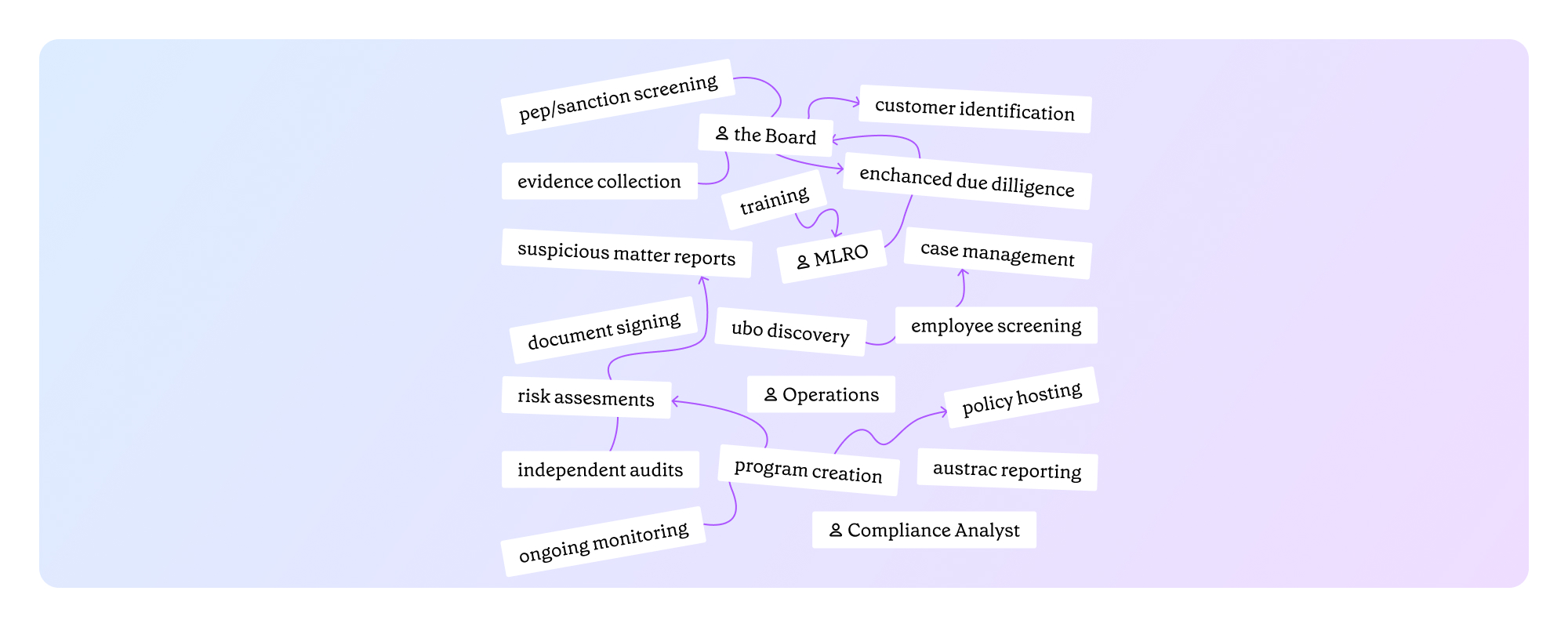

Australia’s real estate industry is about to step into AUSTRAC’s spotlight.
This is because when the Tranche 2 reforms take effect next year, agencies will assume Anti-Money Laundering and Counter-Terrorism Financing (AML/CTF) obligations on par with the big banks.
But there’s no need for panic.
AUSTRAC has enacted the enabling legislation, yet the specific Tranche-2 obligations and detailed sector guidance remain in draft and will not be finalised until later in 2025.
Businesses don't need to be compliant yet, but now is the time to prepare, learn, and plan for the March 31 enrolment and the July 1 2026 immplementation.
The good news? Personr is here to help navigate the changes and act as an educational guide.
What even is Tranche 2?
It’s all about compliance!
Tranche 2 is the upcoming second phase of Australia’s AML and CTF reforms.
These reforms will be put in place from July 1 2026, and will bring professional service providers, including real estate professionals, under AUSTRAC regulation.
The goal of the updated regulation is to close criticised gaps by mandating risk-based customer due diligence, reporting and compliance programs, aligning Australia with international standards.
This change will strengthen Australia’s defences against financial crime.
Reasons for Tranche 2:
According to AUSTRAC CEO Brendon Thomas, serious and organised crime is costing Australia more than $68 billion per year.
This is a major threat to financial systems and national security.
AUSTRAC states, in some cases, money laundering organisations have treated Australian professionals as enablers of crimes.
This means some lawyers, accountants, real estate agents, and dealers in precious metals and stones have been exploited or co-opted to help launder illicit funds.
The goals of the reforms are to close the avenues of organised crime.
Why is the real estate sector included in Tranche 2?
The real estate sector has fewer AML and CTF regulations, giving criminals the opportunity to use the industry to legitimise illicit funds.
This can be seen through purchasing properties to “clean” large sums of money.
While speaking at the Integrity Inside Financial Crime Summit in June, Mr Thomas said since 2020, the Australian Federal Police have restrained more than $790 million in residential and commercial real estate properties.
This represents 65 per cent of the $1.2 billion in restrained criminal assets.
“It pushes up property prices, it takes a property that would otherwise have been purchased by a hard-working Australian and puts it in the hands of organised criminals seeking to line their own pockets with ill-gotten gains,” Mr Thomas said at the summit.
“We see time and again that property is used to layer and integrate funds, often unknowingly facilitated by professional advisers.”
Unlike banks and casinos, real estate agents, developers, and buyer agents do not have the same customer due diligence or suspicious matter reporting duties.
This has created a “blind spot” for AUSTRAC, theoretically providing the opportunity for illicit funds to be transferred through property transactions undetected.
Adding real estate and the other industries to the list of designated services required to meet AUSTRAC’s regulations allows Australia to catch up with its peers (NZ, UK, Canada and the EU) who currently impose AML duties on the industry and its professionals.
Overall, real estate is included within Tranche 2 because it has been identified as a high-risk profession that’s considered under-regulated.
So what should businesses do?
Right now, businesses should educate themselves on what's to come, stay up to date with AUSTRAC announcements, and utilise education tools.
Here’s what we know you’ll need to do before July 1 2026
AUSTRAC provides a comprehensive list of obligations that designated services will need to follow. For a full breakdown, click here.
What happens if businesses don’t comply after July 1 2026?
“If you don’t meet your obligations under AML/CTF law, AUSTRAC can take steps to enforce your compliance and/or seek a penalty,” the regulatory body said.
These can take the form of “enforcement actions”.
These are legal actions that ensure reporting entities comply with the law.
Another path AUSTRAC can take includes issuing a company with a written notice. This can require people to:
AUSTRAC is not afraid to review or take action against non-compliant companies and industries.
How can personr help?
Personr prides itself in education and transparency!
We will translate the complex world of compliance into plain English and we will provide bite-sized explainers and easy-to-read articles to navigate the compliance changes.
Arm yourself with knowledge so you can hit July 1 2026, confident and not scrambling.
Need a brain-break?
On a lighter note, we thought we’d recommend some of the top movies that involve money laundering and real estate!
Disclaimer: This is for general information only. The information presented does not constitute legal advice. Personr accepts no responsibility for any information contained herein and disclaims and excludes any liability in respect of the contents or for action taken based on this information.
Copyright © 2023 Personr Pty Ltd (trading as Personr).